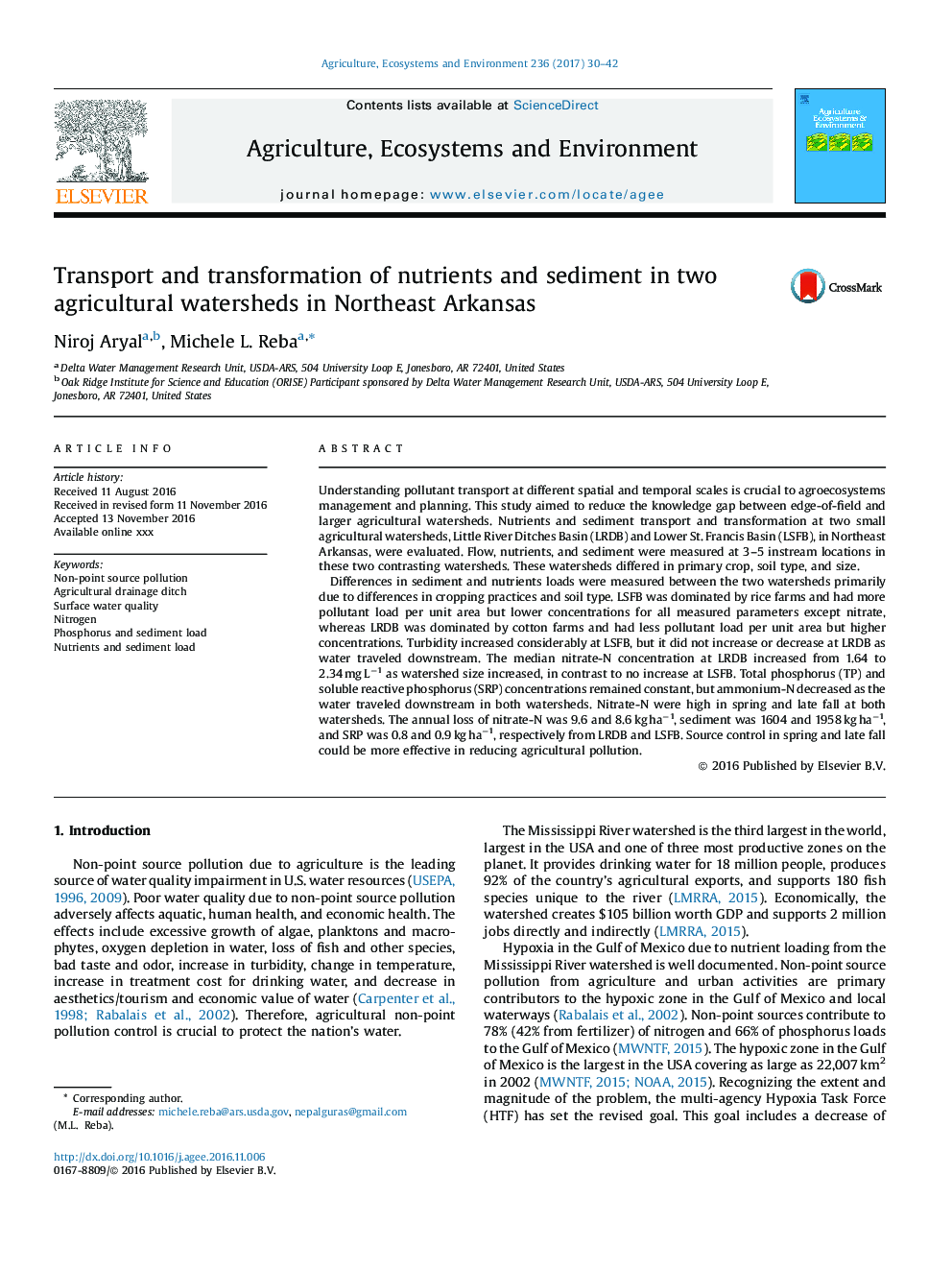| Article ID | Journal | Published Year | Pages | File Type |
|---|---|---|---|---|
| 5537873 | Agriculture, Ecosystems & Environment | 2017 | 13 Pages |
Abstract
Differences in sediment and nutrients loads were measured between the two watersheds primarily due to differences in cropping practices and soil type. LSFB was dominated by rice farms and had more pollutant load per unit area but lower concentrations for all measured parameters except nitrate, whereas LRDB was dominated by cotton farms and had less pollutant load per unit area but higher concentrations. Turbidity increased considerably at LSFB, but it did not increase or decrease at LRDB as water traveled downstream. The median nitrate-N concentration at LRDB increased from 1.64 to 2.34 mg Lâ1 as watershed size increased, in contrast to no increase at LSFB. Total phosphorus (TP) and soluble reactive phosphorus (SRP) concentrations remained constant, but ammonium-N decreased as the water traveled downstream in both watersheds. Nitrate-N were high in spring and late fall at both watersheds. The annual loss of nitrate-N was 9.6 and 8.6 kg haâ1, sediment was 1604 and 1958 kg haâ1, and SRP was 0.8 and 0.9 kg haâ1, respectively from LRDB and LSFB. Source control in spring and late fall could be more effective in reducing agricultural pollution.
Related Topics
Life Sciences
Agricultural and Biological Sciences
Agronomy and Crop Science
Authors
Niroj Aryal, Michele L. Reba,
